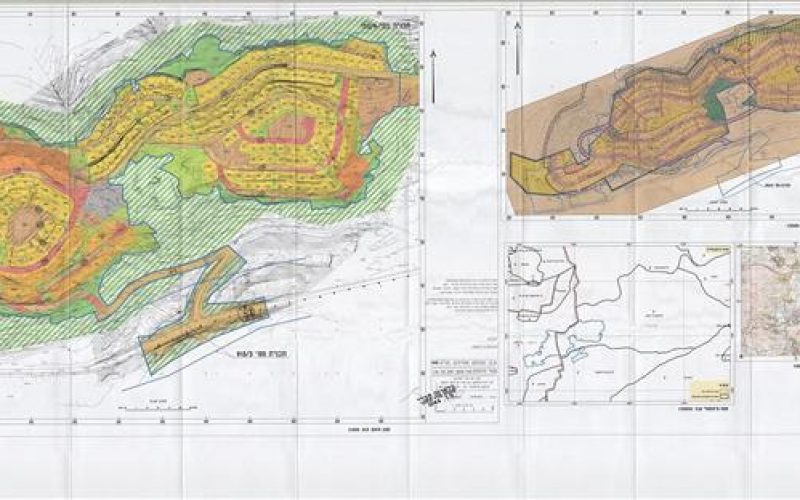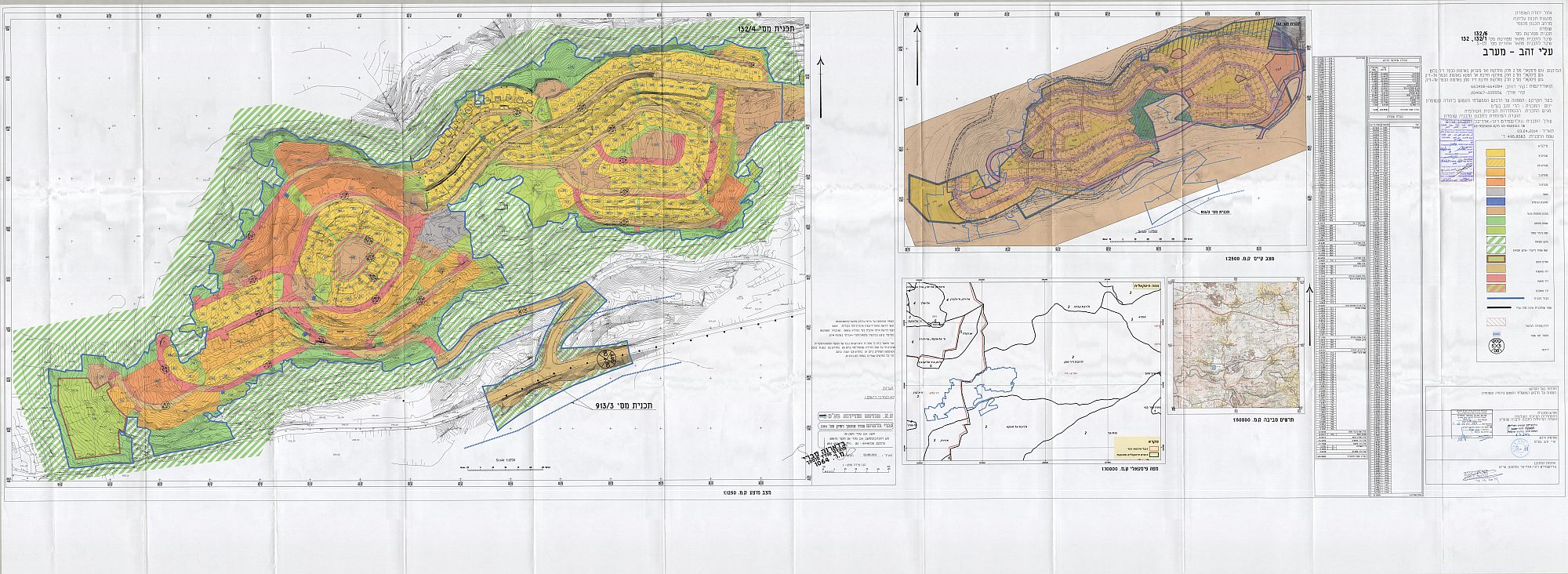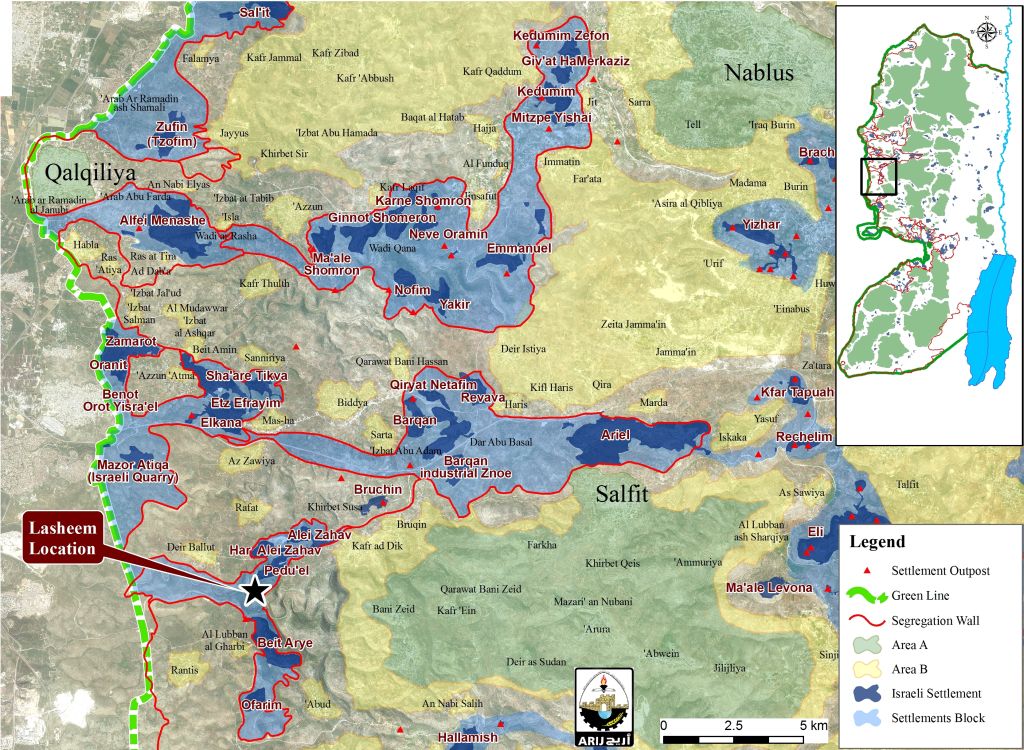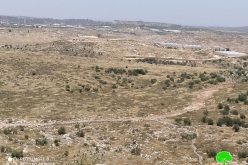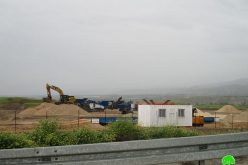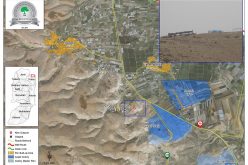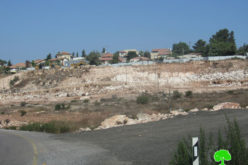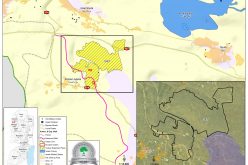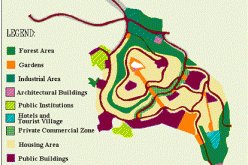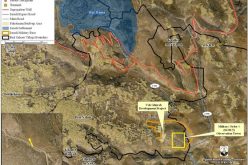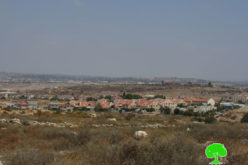On the 16th of May 2016, the Israeli newspaper of “Haaretz” revealed that the Deputy director of the so-called World Zionist Organization’s settlement division; Yuval Funk, revealed in a letter that the division has recognized a neighborhood called “Leshem” near the Israeli settlement of Alei Zahav, as a new settlement altogether. According to the WZO, the Israeli Government did not done this step before for “technical-political” reasons, and nowadays the “Leshem site” or neighborhood will consider as a “Settlement”
The history of Leshem settlement neighborhood, which it meant to be a neighborhood in “Alei Zahav settlement, which located at the western part of Salfit city, within the illegal Israeli settlement bloc “Ariel”, back to the 1985 when the plan was approved for the construction of the neighborhood by the Israeli Land Authority, but for many reasons the plan was freeze.
And from 2012 – present, the construction of the housing units in Leshem “settlement” ongoing, where according to the Israeli Plan No. TPS 132/6, 694 housing units will be constructed on 495.8 dunums of land, which the tenders for this plan was published on the month of March 2014. See the image for the plan No. 132/6
However on the 25th of August 2013, what so-called Israeli Housing Minister, Uri Ariel, celebrated the inauguration of what was a new Israeli settlement neighborhood “Leshem” (currently under construction- 100 housing units were already built that time) in Alei Zahav settlement, west of Salfit city. During the ceremony, the minister (Uri Ariel), stated that: the Leshem neighborhood is “Formally part of an existing settlement, but will function as a separate community for all intents and purposes, and we shouldn’t be afraid to say it" ………………."There is no way, during any negotiations, that we will not build in Jerusalem, Judea and Samaria, the Jordan Valley and all the land of Israel. Today, we are inaugurating a new community."
More than that, another statements were marked in the same ceremony: Deputy Transport Minister Tzipi Hotovely added: "It doesn’t matter if this is a settlement or a neighborhood, as long as we build more houses. It is at this time of negotiating that it is most important that more neighborhoods or settlements be built and that the Palestinians are sent a message that Israeli settlement is here to stay."
Gershon Mesika, head of what is so-called Shomron Regional Council also added: I'm telling John Kerry… you can talk and do whatever you want. We will stay here and build on all the hills around."
It is worth pointed that Leshem along with Ali Zahav , Har Eli Zahav, Peduel, Beit Arye and Ofraim, are located in an enclave inside the borders of Ariel settlement bloc[1] in the area known today to the Palestinians as the Western Segregation Zone (An area located between the 1949 Armistice line and the route of the segregation wall…. while Israel planing to annex this area to its current illegal and unilateral borders through the construction of the Segregation Wall. See the map below:
Leshem is an illegal Israeli settlement located to far west of Salfit Governorate and 5 km away from the Green Line (Armistice Line of 1949). It is located to the south nearby of the illegal settlements of Eli Zahav and Peduel. The Leshem settlement was constructed in 2013 on Palestinian lands from the nearby Kafr al-Dik and Deir Ballut villages, while three architectural sites in the area were damaged by construction. Today about 100 Jewish families living in Leshem settlement with much thousands expected to settle in the settlement once the 694 housing units building completed.
From neighborhood to Settlement
For Israelis ,the change of the term “neighborhood” to “Settlement”, will change a lot of things in the settlement and will benefit the Israeli settlers who already living there or for those who will move to live in Leshem settlement.
- Once Leshem site or neighborhood become a settlement after it get the approval from the Israeli Authorities, it will get an amount of the Israeli Government’ privileges that include, finical aids, and especial Taxes and exepmtions.
- Leshem will get a master plan that will allow the expansion of the settlement in the future.
- The settlement not only will include housing units but also, public buildings, commercial structures, open area, parks, schools, and health centres. And this what was included within the Israeli Plan TPS 132/6. Which means that the Israeli Authorities aim to change the status of the Leshem site from neighbourhood to settlement in the future for the interest of its colonial and expansionist project in the oPt.
For that, the letter wrote by the Depute Directed of WZO, which considered Leshem site as “Settlement” will snapped into consideration of the Israeli Government.
Legal & International Status
Netanyahu’s denial of the International legitimacy represented by the United Nation Security Council Resolutions mainly 338 & 242, and it’s deliberately foiling any International-led efforts for the interest of reaching just and durable peace agreement with the Palestinians, shows the real face for the longest Israeli Occupation.
UNSCR 242, adopted in November 22, 1967: Calls on Israel to withdraw from the all of the Territory it occupied in its aggression on June 5, 1967.
Also United Nation Security Council Resolution No. 446 of 1979 calls on Israel to rescind its previous measures and to desist from taking any action which would result in changing the legal status and geographical nature and materially affecting the demographic composition of the Arab territories occupied since 1967, including Jerusalem and, in particular, not to transfer parts of its own civilian population into the occupied Arab territories'
Also UNSCR No. 452 of 1979 “calls upon the Government and people of Israel to cease, on an urgent basis, the establishment, construction and planning of settlements in the Arab territories occupied since 1967, including Jerusalem.”
Moreover ,UNSCR No. 465 of 1980 'called upon Israel to stop building in the Israeli settlements in the occupied territories and to dismantle all of the Israeli settlements built in the aforementioned territories since the year 1967, and demanding all of the state parties of the UN not to help Israel in building these Illegal settlements'.
Furthermore the Fourth Geneva Convention of 1949 also states in Article 49 that “The occupying power shall not deport or transfer parts of its own population into the territories it occupies.” and Article 174 of the same convention “prohibits the 'extensive destruction and appropriation of property not justified by military necessity and carried out unlawfully and wantonly.”
Article XXXI of the 1995 Oslo agreement Israel is forbidden from building or planning to any project or settlements or any colonial expansion or any plan that lead to change the status of the West Bank and Gaza Strip. The article provides “Neither side shall initiate or take any step that will change the status of the West Bank and the Gaza Strip pending the outcome of the permanent status negotiations”.
In May 2001, the head of the International Red Cross delegation to Israel and the Occupied Territories said that settlements are 'equal in principle to war crimes'. (Note: 'The transfer, the installation of population of the occupying power into the occupied territories is considered as an illegal move and qualified as a 'grave breach.' It's a grave breach, formally speaking, but grave breaches are equal in principle to war crimes', Rene Kosirnik, head of the ICRC delegation to Israel and the OPT, press conference 17 May 2001).
[1] Ariel settlement block : located northwest of Salfit Governorate. It separates between Qalqilya and Salfit Governorates. The bloc constitutes from 18 illegal settlements of which, 14 settlement located within Salfit Governorate boundaries. It occupies an area of 53,384 dunums (26.2 % from the total area of Salfit Governorate) while inhabited by +25,000 settlers.
Prepared By
The Applied Research Institute – Jerusalem
ARIJ

